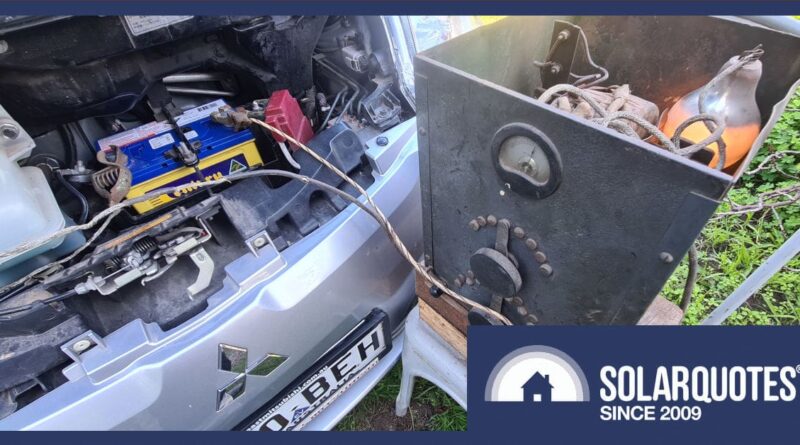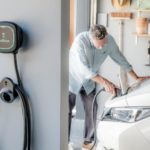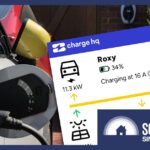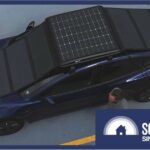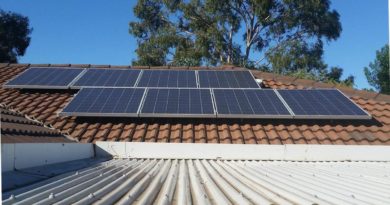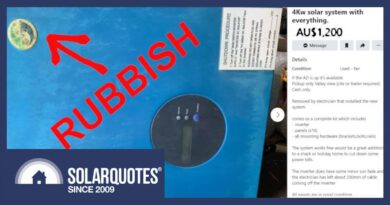Your EV Has A 12 Volt Battery – It Can Stop You Dead
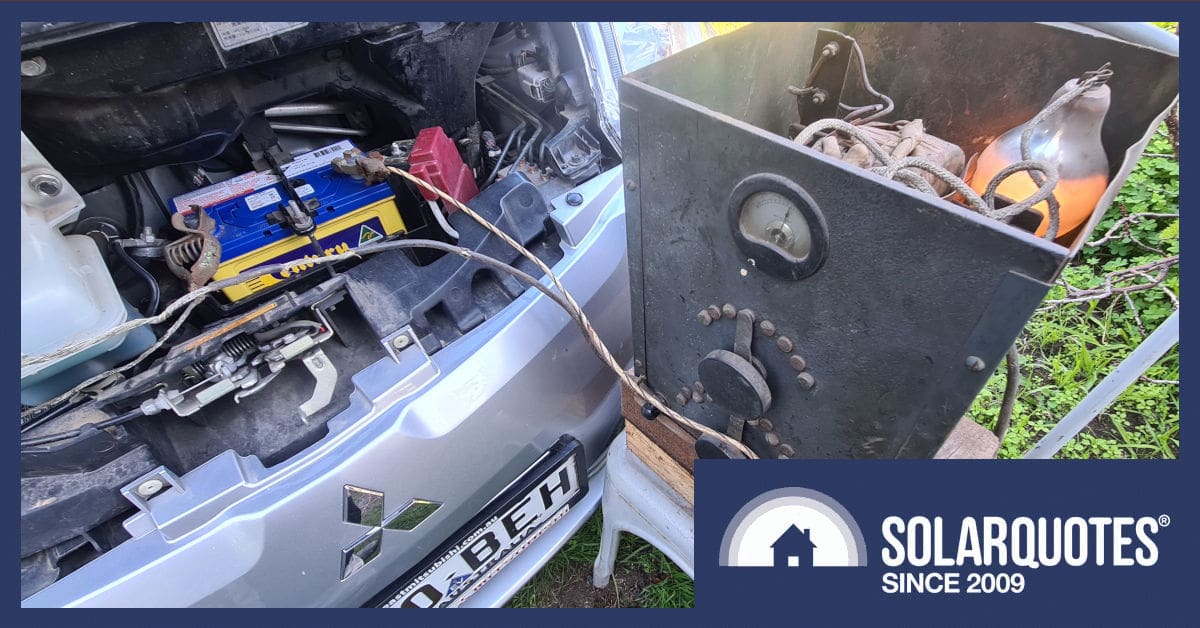
Some standards live forever. That’s a 100-year-old battery charger with a glowing valve rectifier maintaining an EV.
Running late on the morning school run? That’s when problems tend to hit. Even with two EVs and a PHEV in the driveway, I’ve learned flat 12v batteries are still a problem, and keeping a few tools handy can save the day. Let me show you why charging a flat 12v battery can be quicker than shifting the kids’ car seats into a new car.
EVs Aren’t Space Ships
Despite incredible software advances and missteps in minimalist touchscreens, EVs are built from legacy vehicle technology. The traction motor and main battery pack might be 400 or 800 volts, with bright orange cables, but the surrounding architecture is garden-variety car parts.
12 volts Is A Standard In Motoring.
Despite 100+ years, wheel diameters are still measured in inches, Schrader valves keep the air in your tyres, and lead terminal posts have been a standard size since batteries were installed in cars to start combustion engines.
From 1919, Ford’s Model T got “electric equipment,” and through Volkswagen’s Beetle and the first Holden, most cars had 6 volt systems.
However, for the last 50+ years, almost everything—cars, motorcycles, lawnmowers, tractors, and many trucks—have been 12 volt. And despite the decline of smoking, the cigarette lighter has become the standard plug for powering accessories in your vehicle.
As an auto electrician, I find it laughable that cigarette lighters are limited to 150 watts at best. Yet, there are all manner of inverters, EV chargers & fridges plugged into the most dodgy socket invented. Depending on your car, these accessories can easily run the 12v battery flat.1
Without 12 volts You’ve Got Nothing
When you “turn the key” on your EV, the lights on the dash, the contactors that connect the traction battery, and the computers running the whole show rely on a 12-volt battery. Once the car is running, the 12-volt battery is charged from the main traction battery using an onboard charger. It’s not unlike the alternator, which is driven by a fan belt on the front of your combustion engine.
However, an EV is just like a conventional car. If the 12-volt battery is flat, you can’t start any of the systems, no matter how much energy is stored in the main traction battery.
Symptoms Can Be Cryptic
After sitting for a fortnight, my iMiev has been known to run the 12-volt battery down. The interior light develops a soft golden glow, but the dash still lights up when you turn the key.
For the observant, there aren’t as many clicks and whirrs as the vehicle starts, but the “fuel gauge” displays charge in the traction battery as usual. The key difference is that then it falls to zero and counts up2 slowly to indicate something is wrong with the 12-volt system. They could make it so simple with a dedicated warning light.
MacGyvering Things Is Possible
A portable car jumpstarter pack would be an easy solution, but I don’t own one. Instead, I stripped the ends of some scrap solar cable, jammed them into an 18-volt cordless drill battery, and connected it to the 12-volt battery under the bonnet. Paralleling these two incompatible batteries was a perfectly dodgy experiment.
To prevent damage to the car’s electronics, I relied on the flat car battery, pulling the small tool battery down to 12ish volts while simultaneously using the available energy to boot up the car system and engage the onboard 12-volt charger. I don’t suggest you try this at home, but it did work.

Perhaps MacGyver needs to update to an EV?
PHEV Has More Words But Less Information
My latest conundrum was pressing the start button and finding the usual clicks and whirrs replaced by beeps and flashing warning messages. “EV SYSTEM SERVICE REQUIRED” was the main one, along with the dreaded car picture dissected by an exclamation mark! It was a nice morning to walk to school anyway.
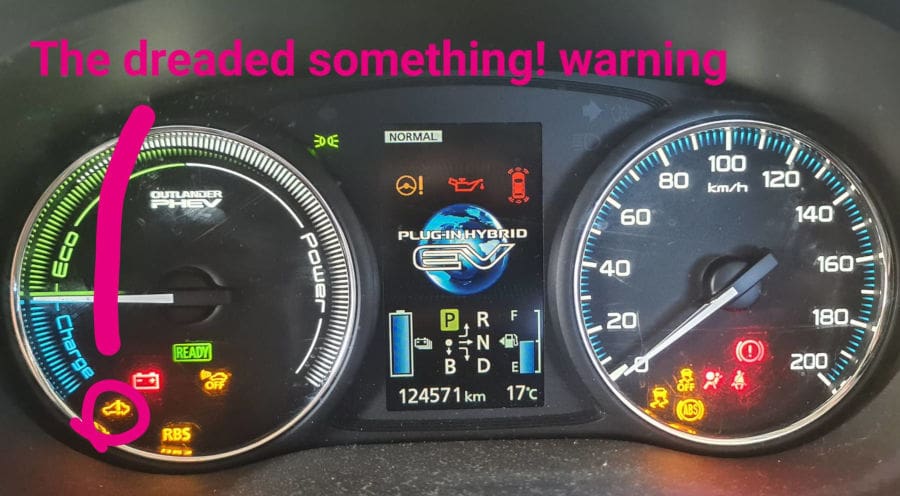
Error messages are displayed where it says “plug-in hybrid” but there’s no mention of the 12v battery being flat
When diagnosing it, I first noticed that the vacuum pump was noisy and rough, because without enough voltage it ran slow.
Cars normally use engine manifold vacuum to reduce pedal effort on the footbrake but EVs have none of that. Some EVs use an electric brake booster, many just adapt legacy car systems by using a vacuum pump.
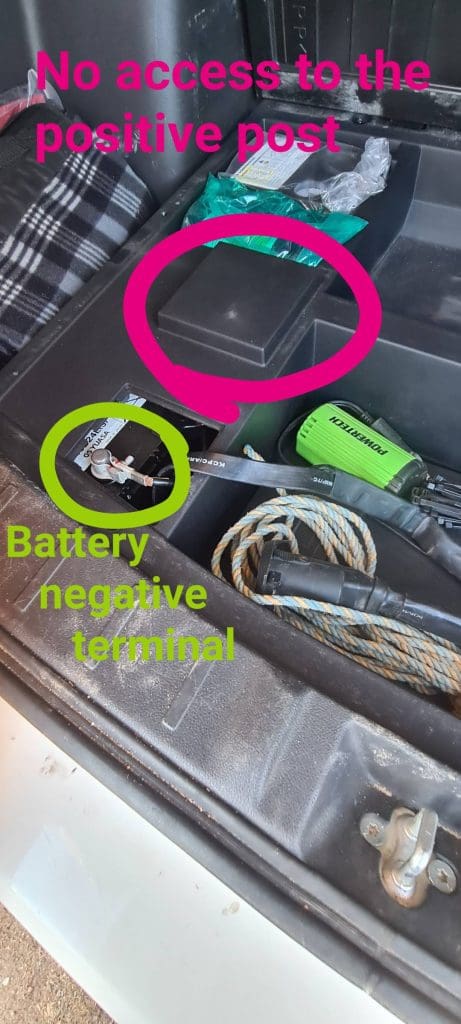
Design failure. The battery negative is available to disconnect, but access to the positive requires removing the whole boot floor with a screwdriver.
My multimeter showed the car battery was down to 9 volts, so I connected my old charger to give it a tickle. A few hours later, all was good with the world, but I was curious to find the root cause of the problem. Maybe it’s just that the factory-fitted 12 volt lead-acid battery in the boot is 10 years old now.
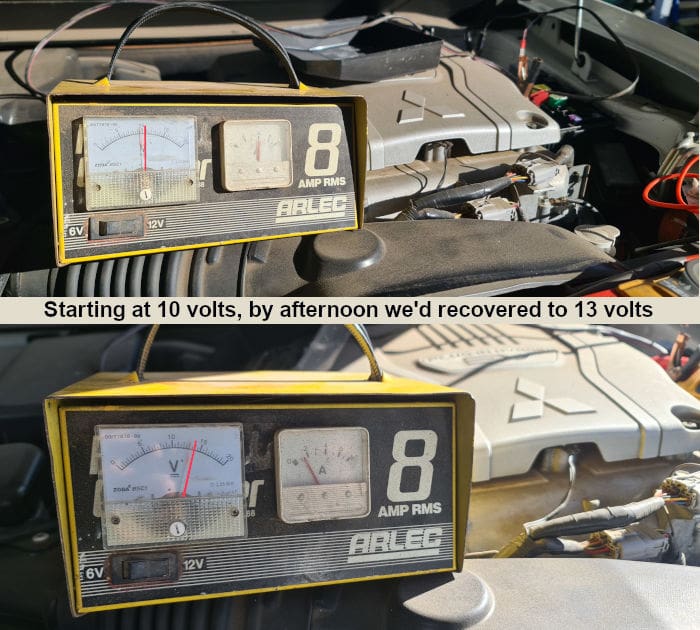
I installed a volt meter in this old charger. As the state of charge improves, voltage climbs and current (amps) decreases.
Yes, You Can Jump Start With An EV
While I always urge some caution and remind people that it’s not a sin to consult the instruction manual, there’s a standard procedure for charging any 12 volt car system, be it EV or ICE.
Click on this FAQ for a full rundown on how to safely jumpstart your car.
TL;DR Safety Messages
- DO NOT TRY TO CRANK AN ICE ENGINE USING JUMPER LEADS FROM AN EV DONOR CAR.
- DO NOT DISCONNECT JUMPER CABLES WITH EITHER CAR TURNED ON
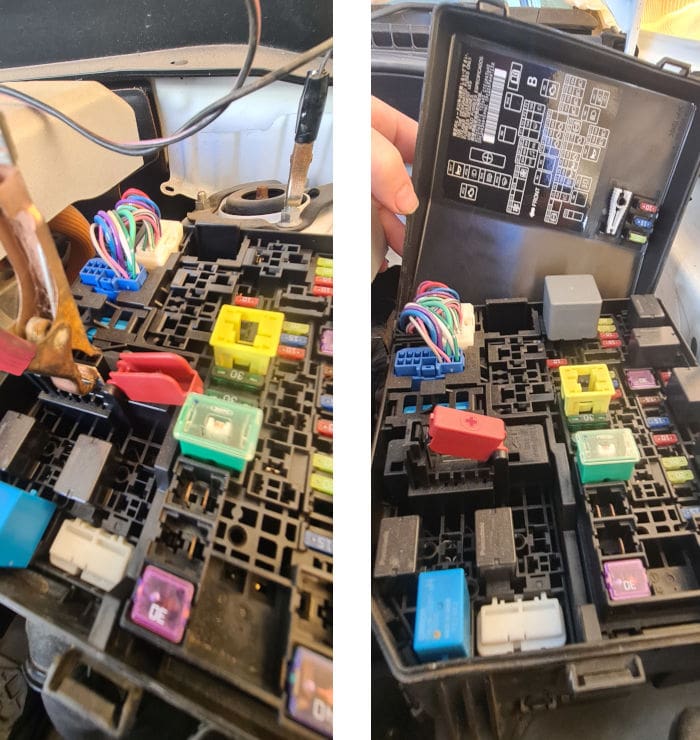
Under the bonnet of this car, there’s a fuse box. Remove the lid, flip open the red cover marked (+) and connect your charger leads
Modern Cars Are Very Reliable
You may never need a spare tyre, jack, or jumper leads, but these things aren’t completely redundant yet. Before scrapping Dad’s battery charger, it’s worthwhile leafing through your car manual. Some basic tools could prove a lot cheaper and faster than calling a tow truck because you forgot to unplug the car fridge.
Footnotes
Original Source: https://www.solarquotes.com.au/blog/ev-12-volt-battery/

